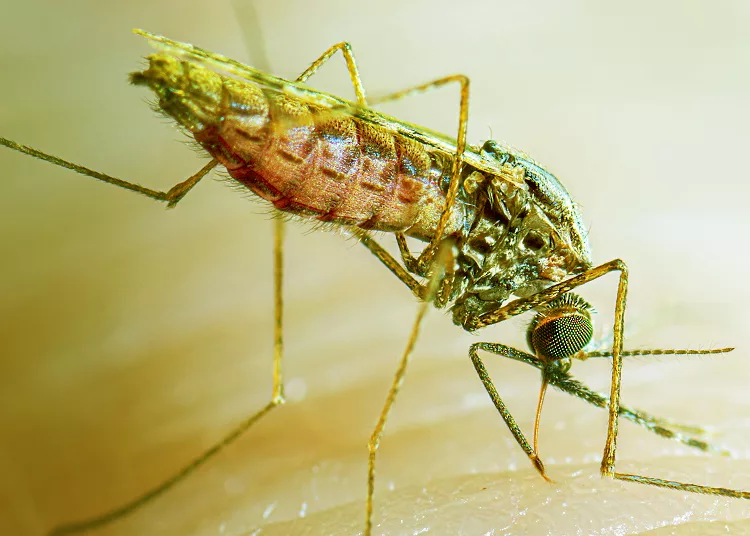It took 48 years for Rockalina to get a taste of earthworm.
The eastern box turtle had lived since 1977 inside a New York home, never once venturing outside. Her nails curled into her feet, her mouth was misshapen, and her skin had taken on a crepey, washed-out appearance - as if she had been bleached by the sun.
Chris Leone was overjoyed to see Rockalina chomp on the wriggling worm, after she had spent decades eating only cat food, lettuce and the odd piece of fruit. Leone and his wife, Casey, rescued the turtle in late February and spent a month stabilizing her health, with gentle soaks in water, a nail trim and good nutrition. In April, Leone set Rockalina down in an outdoor enclosure where she felt the grass and the sun for the first time in decades.

"The second she felt it, it was almost like she was posing; like she was back from the dead,” Leone said.
Leone, a herpetologist who runs the southern New Jersey breeding and rescue facility Garden State Tortoise, initially wasn’t sure Rockalina would survive.
He estimated the turtle was a fully grown adult, about 15 to 20 years old, when she was plucked from the wild in 1977 by a little boy with disabilities who found herwhile playing outside and wanted to keep her for a pet, he said.
About 48 years later, a relative of the boy, now an adult whose parents had since died, contacted Leone asking for help.
When the relative sent Leone a photo, he wasn’t sure at first what he was even looking at. Eastern box turtles have a vibrant color, particularly males, with a sheen on their pebbly scales, while their claws and beak-like mouth are hard, short and sharp to help them tear apart food.
In contrast, Rockalina had pale, dried-out skin, overgrown claws and missing scales; her tail had fallen off; and crevices around her limbs were tangled with cat hair.
"We’ve seen a lot of rough stuff when it comes to turtles and tortoises, primarily because they’re one of the easiest animals to mess up if you don’t raise them properly,” Leone said.
Leone wrote back immediately to say he would take the turtle in.
When Rockalina was retrieved from New York, Leone asked the person handling the transfer, "What was the last time she opened her eyes?”
The owner’s relative couldn’t say.
 Rockalina enjoys a spoon-fed meal.
Rockalina enjoys a spoon-fed meal.
(Photo by Garden State Reptiles)
Turtles hatch, mature and even die slowly and will eat until their final days. Leone was prepared for the reality that Rockalina’s promising signs of life would not necessarily indicate she would last long. He also worried one of her back legs, which had been pinched off by a tangle of cat hair, might be necrotic.
What he would soon learn was that he had a survivor on his hands. As soon as he set her in a warm bath of water for what he assumed was the first time in years, she dropped her head and drank profusely for "what felt like an at least an hour.”
"She just kept drinking and drinking and drinking,” he said.
"And I kid you not, by the next morning, maybe not even that long, her eyes opened.”
In the weeks since her rescue, Rockalina has shed her dead skin, her injuries are healing, and she’s enjoying burrowing, eating and reexploring the natural world she was last a part of 50 years ago.
Because of her long captivity and special needs, she’ll never be able to stay in an enclosure with other turtles, Leone said.
As her health improves, she has also picked up plenty of admirers on Garden State Reptile’s YouTube channel, where Leone has documented her progress along with other videos about rescue reptiles.
"She’s absolutely adorable,” Leone said. "And with the way that the beak is shaped, it looks like she’s constantly smiling, you know?
For people who love turtles, Leone said the best thing to do for ones in the wild is leave them be - or help them across the road if they’re in a busy intersection.
Turtles take about two decades to mature and lay a clutch of two or three eggs a year; removing one from the wild depletes their numbers, especially since it will take two decades for any surviving hatchlings to reach reproductive age.
Leone’s rule of thumb: If an eastern box turtle is in the wild, "they’re already home.”
Since Rockalina’s rescue, Leone said, YouTube viewers sharing health issues or personal difficulties have written to him saying they’ve been inspired by the little turtle’s resilience.
"A box turtle is so innocent. It just wanted to keep to itself and do no harm to anything - except maybe a little earthworm,” Leone said. "And here she is, and she’s been around for so long.
She has such a story to tell.”
















